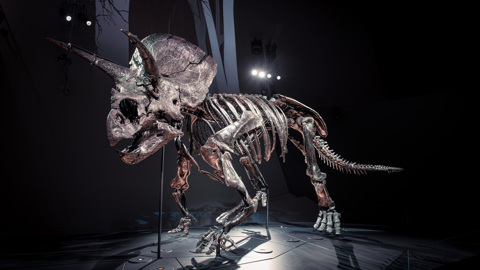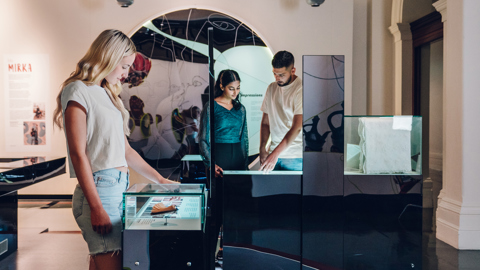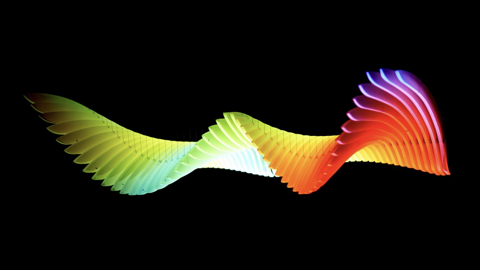Avaya Pola, Aqua Wings
Transcript
Avaya’s design solutions portfolios track the research behind, and design and testing of ‘Aqua Wings’ – modular floaties that provide tactile engagement tailored to age and ability, and provide visibility through their bright, sustainable design.
The design brief for Avaya’s project comes from ‘Mary’, a 34-year-old mother and emergency nurse with two children (aged 2 and 4). Like her partner, Tim, she has shared her love of water with her children and they regularly attend the beach and use the home pool. They see a gap in the market for flotation-devices for young children that focus on safety (both through use of the device and greater awareness via an accompanying marketing campaign about the limitations of flotation devices without allied (adult) vigilance and (child) upskilling.
Aqua Wings consist of a base float in the form of a smooth, teal-coloured brick (14x2x7cm) designed to strap onto a child’s upper arm(s) with an orange and grey striped strap and a teal plastic snap buckle. The float is positioned to face away from the child’s torso. Depending on a child’s need for more, or less, flotation, additional floats can be added to the base float, building outwards like stack of building bricks to provide greater buoyancy support without compromising the range of movement of the child’s arm(s). These additional floats are in bright neon colours (yellow, orange and green). Each float features a different aquatic character: a seahorse, a fish and an octopus, transferred onto the painted floaties via waterslide paper. The first additional float slides onto the base float via a tongue and groove fixing. Subsequent floats adhere via magnets
The allied marketing campaign includes a poster, showing via the use of white arrows connecting each of the floats with the base float, how the floaties can be built up, along with a second view that highlights the floats’ character-decorated side. Text on the poster reads “All new modular floaties. Aqua Wings. Adjustable to your needs. Registered with the Australian Water Safety Council”. The poster’s background consists of waves of deepening shades of blue from top to bottom.
Avaya developed a campaign around the mantra “Float and Watch. Stay a float and stay safe’, which features on a range of banners (each showcasing a different aquatic character) and a leaflet.
The front of the DL size leaflet features an orange octopus, whose pink tongue pokes out from a smiling mouth. The back of the leaflet lists 6 ways to use floaties safely (inspect the floaties; proper application; supervise closely; teach safe habits; remove carefully; understand limitations). A subtle design feature comes when you place three of the leaflets side by side: the central leaflet, featuring the octopus’s body face up, the flanking leaflets (featuring its tentacles) face down to join together the tentacles with the body in perfect alignment.
In her design solutions portfolio, Avaya uses the PMI (plus, minus, interesting) strategy to develop the banners through to their final design, where the use of the same characters that feature on the floaties reinforces the sense of trust and reliability for the audience and builds on an established connection. She selected curved shapes to render the characters to enhance a sense of movement. The text ‘Float and Watch’ in aquatic blue takes up a prominent three-quarters of each banner. Each banner carries a QR code for the audience to scan for more information, leaving the banners themselves uncluttered with excess text.






